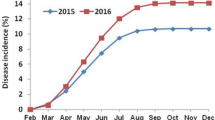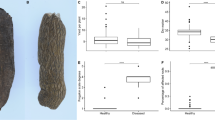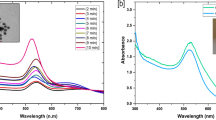Abstract
RATOON stunting, a virus disease of sugar cane, is difficult to diagnose since the macroscopic symptoms are ill defined. Several tests described for diagnosing virus diseases in plants, including one for sugar cane1, were tried but gave inconsistent results. Attempts were therefore made to develop a colour reaction for detecting the presence of the virus. The investigations were prompted by reports on the use of 2,3,5-triphenyl tetrazolium chloride to detect viruses in plants2 and on the use of the same substance to localize the site of reducing activity in sugar cane3.
This is a preview of subscription content, access via your institution
Access options
Subscribe to this journal
Receive 51 print issues and online access
$199.00 per year
only $3.90 per issue
Buy this article
- Purchase on SpringerLink
- Instant access to full article PDF
Prices may be subject to local taxes which are calculated during checkout
Similar content being viewed by others
References
Farrar, L. L., Phytopathology, 47, 10 (1957).
Beal, J. M., Preston, jun., W. H., and Mitchell, J. W., Plant Dis. Rept., 39, 558 (1955).
Dufrenoy, J., and Pratt, R., Amer. J. Bot., 35, 333 (1948).
Jambor, B., Nature, 173, 774 (1954).
Jambor, B., Nature, 176, 603 (1955).
Hughes, C. G., and Steindl, D. R. L., Tech. Com. No. 2 Bureau of Sugar Experiment Stations, Queensland (1955).
Author information
Authors and Affiliations
Rights and permissions
About this article
Cite this article
ANTOINE, R. A Staining Technique for detecting Ratoon Stunting Disease in Sugar Cane. Nature 181, 276–277 (1958). https://doi.org/10.1038/181276a0
Issue date:
DOI: https://doi.org/10.1038/181276a0
This article is cited by
-
Studies on sandal spike
Proceedings / Indian Academy of Sciences (1966)
-
Chemical tests in the diagnosis of plant virus diseases
The Botanical Review (1961)



